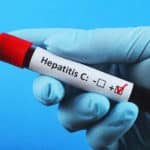Milk Thistle Doses Studied Are Too Low
This study of previous studies showed inconclusive results for milk thistle preventing death from liver disease.
However, the researchers conclude that higher doses should be studied because milk thistle is non-toxic and has been seen to protect liver cells in many in vitro studies.
Incidentally, the 140mg studied in the past is clearly sub-standard. Maximum Milk Thistle, taken as recommended, provides 720mg of silybin phytosome which delivers many times more protection to your liver with no negative side effects. Go to http://www.maximummilkthistle.com for more information on protecting your liver with this powerful natural remedy.
STUDIES OF HIGHER DOSES OF MILK THISTLE URGED BY RESEARCHERS
Milk thistle, a widely used alternative medicine, is not proven effective in lowering mortality in alcoholic or hepatitis B or C liver disease, according to a systematic review of current evidence.
While some studies found that liver-related mortality may be significantly reduced in patients treated with milk thistle, these findings were not duplicated in the higher quality clinical trials.
However, milk thistle was found safe to us with no serious side effects and with participants perceiving improvement in symptoms — although no more than with placebo.
Dr. Andrea Rambaldi, visiting researcher at the of the Centre for Clinical Intervention Research at Copenhagen University Hospital, led a team that reviewed 13 randomized clinical trials involving 915 patients who were treated with milk thistle or its extracts.
Participants had acute or chronic alcoholic liver cirrhosis, liver fibrosis, hepatitis and/or steatosis, and viral-induced liver disease (hepatitis B and/or hepatitis C). Patients with rarer specific forms of liver disease were excluded.
All the trials compared the efficacy of milk thistle or any milk thistle constituent versus placebo or no intervention in patients with liver disease. “There is no evidence supporting or refuting milk thistle for alcoholic and/or hepatitis B or C virus liver diseases,” the authors found.
The review appears in the most recent issue of The Cochrane Library, a publication of The Cochrane Collaboration, an international organization that evaluates medical research. Systematic reviews draw evidence-based conclusions about medical practice after considering both the content and quality of existing medical trials on a topic.
According to the Centers for Disease Control and Prevention, 170 million people worldwide are infected with hepatitis C, and 2 billion are infected with hepatitis B. While a vaccine exists to prevent hepatitis B, there is no vaccine for hepatitis C.
Although the virus can be cleared in a handful of patients, many strains are resistant to treatment. Drug therapies that focus on long-term suppression of the virus are expensive, and many patients develop a resistance. The current gold standard treatment, which combines injections of interferon and ribavirin, has serious side effects and is hard for patients to tolerate.
With lack of effective treatment for liver disease, researchers have been looking for alternative therapies that curb symptoms with minimum adverse effects on patients.
Milk thistle and its extracts have been used since the time of ancient Greece for medicinal purposes, are currently widely used in Europe for liver disease, and are readily available in the United States at alternative medicine outlets and outdoor markets.
G. Thomas Strickland, M.D., Ph.D., professor at the University of Maryland School of Medicine, has been studying the role of silymarin, an extract of milk thistle, in preventing complications of chronic hepatitis virus infection. Strickland says that the exact mechanism of action of silymarin is unclear.
A problem with current trials, according to Dr. Strickland, is that the dose of silymarin administered, typically 140 mg three times daily, is too low. “I would certainly double it,” he says, “especially since at the current dose we’re not seeing any improvement in acute viral or chronic hepatitis, and we’ve shown that silymarin is totally safe.”
“The problem is, there is no cure for viral hepatitis except bed rest and diet, and treatments like silymarin are worth pursuing,” Strickland says, calling for more research funding.
“We should consider doing randomized clinical trials with higher doses of silymarin,” Dr. Rambaldi concurs.
According to the National Center for Complementary and Alternative Medicine , a part of the National Institutes of Health, studies in laboratory animals suggest that silymarin may benefit the liver by promoting the growth of certain types of liver cells, demonstrating a protective effect, fighting oxidation (a chemical process that damages cells) and inhibiting inflammation.
In their review, Dr. Rambaldi and colleagues conclude, “Milk thistle could potentially affect alcoholic and/or hepatitis B or C virus liver diseases. Therefore, large-scale randomized clinical trials on milk thistle for alcoholic and/or hepatitis B or C liver diseases versus placebo may be needed.”
Rambaldi A, Jacobs BP, Iaquinto G, Gluud C. Milk thistle for alcoholic and/or hepatitis B or C virus liver diseases. The Cochrane Database of Systematic Reviews 2005, Issue 2.







